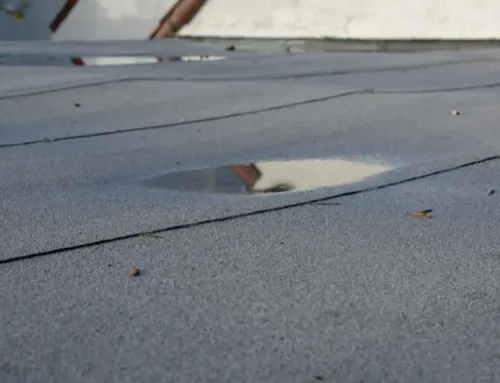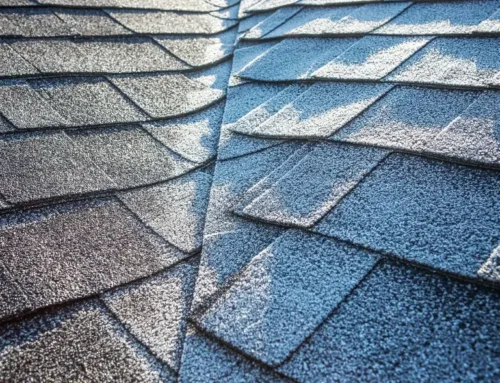
Roofing Insurance Claims: Navigating the Process
Roofing insurance claims can be a daunting process, but when you know what to expect, navigating the process becomes much easier. Understanding when and how to file a claim, as well as what to expect after, will help alleviate the stress that accompanies a leaky or damaged roof. Here’s a step-by-step guide for filing a roofing insurance claim.
Assess the Damage
Before you jump into filing a claim with your insurance provider, it’s important to take stock of your roof’s condition. In major events like hailstorms, hurricanes, high winds, or falling debris, the damage that a roof sustains may be visible at ground-level. If possible, take pictures and document any damage you can see – including any shingles on the ground that have blown off the roof. Never try to walk on your damaged roof – the severity might not always be obvious, and you can risk falling or stepping through the affected sections.
Keep in mind that insurance companies won’t replace an old or worn-out roof – it has to have sustained damage. For a closer look, Alliance Roofing offers free roof inspections for a professional evaluation of your roof. Having a licensed roofer inspect your home prior to you filing a claim will help you confirm whether your home’s roof may be eligible for repair or replacement.
Review Your Insurance Policy
Once you or the roofing company has determined that there is damage to your home’s roof, you’ll want to review your homeowner’s insurance policy. Most policies have a 1-2% deductible that applies to the roof of a home, which the homeowner will be responsible for paying. You’ll also need to check and see if your policy pays out replacement cost, or actual cash value. Make sure you have the most recent copy of your insurance policy, as some insurance companies will transition your roof coverage from replacement cost to actual cash value as the roof ages.
File a Claim
With evidence of damage and an idea of what you’ll be expected to pay, it’s time to proceed with filing a claim through your insurance company. You’ll need to file a claim
through the claim’s office and not through your insurance agent. They’ll ask for the date that the damage occurred (or an estimated date if unknown), and for supporting photos or documentation. Some carriers will have you submit photos through an app or website that is linked to your insurance policy and claim number to help expedite the process.
Meet with the Adjuster
After the claim has been filed, most insurance companies will contact you with a date for an adjuster to inspect the damage that your roof sustained. They’ll take their own photos and notes to provide to the insurance company. At this stage, it may be helpful to have your roofer out at the same time as the adjuster – roofing companies can discuss findings with the adjuster to make sure nothing was missed. Roofers cannot negotiate your insurance coverages or exclusions, but they can answer an adjuster’s questions and clarify their estimates to help you get the best outcome.
Obtain a Roofing Quote
If you haven’t already had a professional roofer come out for an evaluation, you’ll want to do so once you have heard back from your insurance company. Once the amount covered by insurance has been determined, you’ll need to make sure it’s enough to cover the full cost of your roof, minus your deductible. It’s important to note that most insurance companies will require roofing repair or replacement to be done by a licensed roofing company and not by an individual. Even if your home insurance policy doesn’t have that stipulation – your mortgage lender may.
Negotiating and Completing the Claim
Sometimes insurance payments are not sufficient to cover the full cost of the roof – even after your deductible has been applied. By obtaining a quote from a roofing company, you can negotiate with your insurance company to address unforeseen expenses or repairs. This is why it’s helpful to have the roofing company present while the insurance adjuster is inspecting your roof – their discussion can usually prevent you from having to negotiate on your own behalf later.
Once a final amount from insurance has been determined, be sure to ask your insurance provider when the checks will be issued, and to whom they will be made out. Some policies will pay for half of the amount up front, and the other half once the roofing job has commenced. Likewise, checks may be addressed to you, the mortgage company, or the roofing company directly, but may be sent to your mailing address.
Document Repairs
Some mortgage companies require proof of repairs once an insurance claim has been filed. Take photos and save receipts or invoices for materials and labor to provide to your lender. Proof of repair may also lower your homeowner’s insurance – the age and type of roof has an impact on your home’s policy. Submit all documentation to both your lender and insurance company at the conclusion of your roofing project.
The Best of Both Worlds
By following these steps, you can ensure that your roofing insurance claim is processed smoothly. But, to make navigating a roof repair or replacement even more efficient, choose a roofing company that has experience working with insurance claims. If you’ve recently sustained damage to your roof, contact us to help you start the process of having your home’s value and integrity restored. Working with insurance doesn’t have to be stressful – we’re here to help you through the entire process from start to finish.









